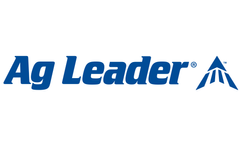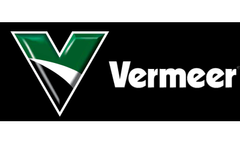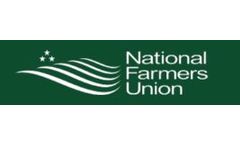Corn Field Articles & Analysis: Older
23 articles found
Mobile genetic elements shatter the concept of fixed location genes on chromosomes 1974: Institute for Genetics, Justus-Liebig University, Giessen, Germany. Prof. Fritz Anders (1) passes two papers to his student: “Please read these (2, 3)…. and provide a summary of them next week in our Journal Club!” Published two decades earlier and authored by Dr. ...
BiOWiSH Technologies, Inc. engaged Helena Agri-Enterprises, LLC as a thirdparty Contract Research Organization (CRO) to conduct a study to determine the effects of BiOWiSH Crop Liquid coated UAN on corn production in ...
Like many farmers, the powerful straight-line winds left their mark on Seeman and his partners’ operation: damaging an auger, flipping over fuel tanks and a flattening a barn. Between their fields Seeman estimates around 725 acres of corn and 380 acres of beans were affected by the storm. “The fields vary by area, certain ...
On July 8, 2019, the National Corn Growers Association (NCGA) announced the winners of the Consider Corn Challenge II, a challenge intended to highlight the range of biobased materials that can be produced with field corn feedstock. The three winners included: ExoPolymer, Inc. for a plan to create a new profile of ...
Maize (Zea mays L.) is a major crop on the Loess Plateau, and calculating the ratio of transpiration to evapotranspiration (T/ET) of maize is important for estimating field water balance. In this study, the sap flow method was adopted to measure transpiration (T) characteristics of maize. In order to calibrate the sap flow gauge, the sap flow rate was compared to the leaf T determined by the ...
This is the first large‐scale assessment of clothianidin residues in soil and bee‐relevant matrices from corn and canola fields after multiple years of seed‐treatment use. The average soil concentration from 50 Midwest US corn fields with 2 to 11 years of planting clothianidin‐treated seeds was 7.0 ng/g, similar to predicted ...
We measured concentrations of neonicotinoid residues in the top 5 cm of soil before planting of maize (corn) in 18 commercial fields with a history of neonicotinoid seed treatment use in southwestern Ontario in 2013 and 2014 using LC‐ESI(+)‐MS/MS. A simple calculator based on first order kinetics, incorporating crop rotation, planting date and seed treatment ...
A three‐year study was conducted on a corn field in Central Illinois, USA, to understand the fate and effects of an insecticidal formulation containing the active ingredients phostebupirim and cyfluthrin. ...
” Breitkreutz notes that the wider raking width also allows the rake operator to slow down and make a better windrow – although he has had it up to 14 miles per hour to keep ahead of 3 balers in a corn field. While most of the corn stalks are custom baled as bedding, they have several customers who want to use them as feed. ...
ByVermeer
As the 2013 corn crop was being planted, futures prices were above $6.00 a bushel with an occasional bump above $7.00. ...
Choosing how much nitrogen (N) to put on corn fields isn’t something farmers take lightly. Many factors go into the decision, including past experiences, the timing of application, yield goals, and results from soil tests. ...
Corn stover, left in fields after corn grain harvest, has been identified as a potential feedstock to help supply biofuel needed to offset a portion of the 14 million barrels of oils consumed daily by the U.S. transportation sector. It was projected to supply 256 million tons of the 1.4 billion tons of biomass (232 million Mg out of 1.3 billion ...
The first crop chosen to parameterize and test the new FAO AquaCrop model is maize (Zea mays L.). Working mainly with data sets from 6 yr of maize field experiments at Davis, CA, plus another 4 yr of Davis maize canopy data, a set of conservative (nearly constant) parameters of AquaCrop, presumably applicable to widely different conditions and not specific to a given crop cultivar, was evaluated ...
Accurate crop development models are important tools in evaluating the effects of water deficits on crop yield or productivity. The FAO AquaCrop model predicts crop productivity, water requirement, and water use efficiency (WUE) under water-limiting conditions. A set of conservative parameters [calibrated and validated for maize (Zea mays L.) in a prior study and considered applicable to a wide ...
The coexistence between genetically modified (GM) and non-GM maize (Zea mays L.) fields is subjected to regulation in several countries. A strategy to reduce cross-pollination from GM to non-GM fields was evaluated, on the basis of reducing the flowering coincidence by sowing at separate times. The trial included narrow plots in which transgenic maize was sown before, simultaneously, and after ...
The emerging cellulosic-based ethanol industry will likely use corn (Zea mays L.) stover as a feedstock source. Growers wishing to maintain, or increase soil C levels for agronomic and environmental benefit will need to use C amendments such as manure, compost, or cover crops, to replace C removed with the corn stover. The objective of this research was to ...
Water-soluble anionic polyacrylamide (WSPAM), which is used to reduce erosion in furrow irrigated fields and other agriculture applications, contains less than 0.05% acrylamide monomer (AMD). ...
Site-specific weed management based on field scale management zones derived from soil characteristics known to affect soil-applied herbicide efficacy could alleviate challenges posed by post-emergence precision weed management. Two commonly used soil-applied herbicides in dryland corn (Zea mays L.) production are atrazine and metolachlor. Accelerated dissipation ...
Producers often overapply N fertilizer to corn (Zea mays L.) because of the uncertainty in predicting the economic optimum nitrogen rate (EONR). ...
Economic or environmental benefits resulting from variable-rate (VR) application of N and seed are uncertain in irrigated maize (Zea mays L.) systems with high yield potential. We evaluated different plant population and N management strategies in two irrigated maize fields in Nebraska. Inputs were varied according to yield zones derived from yield maps, detailed maps of soil organic matter ...









